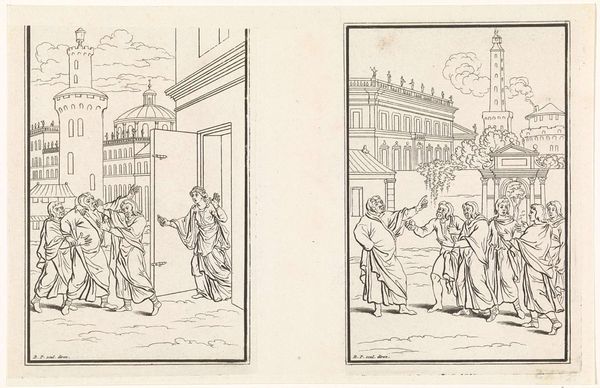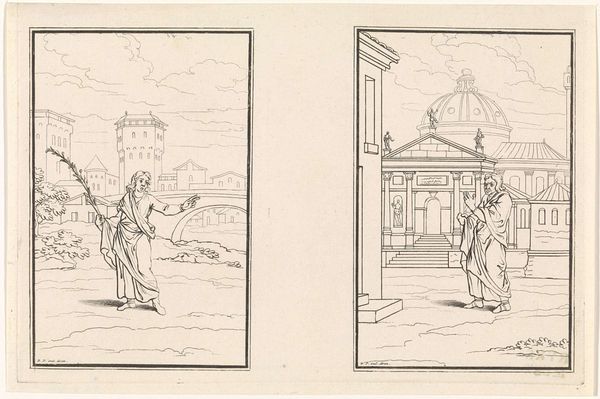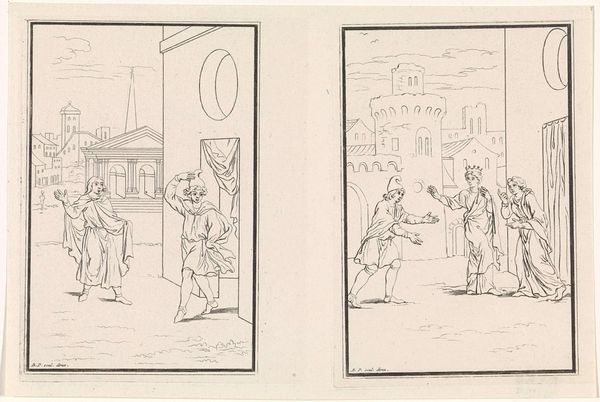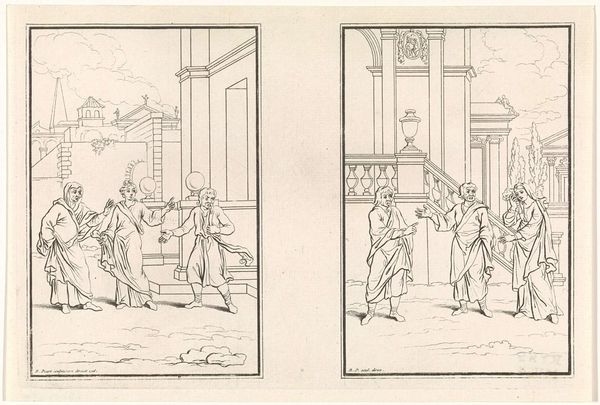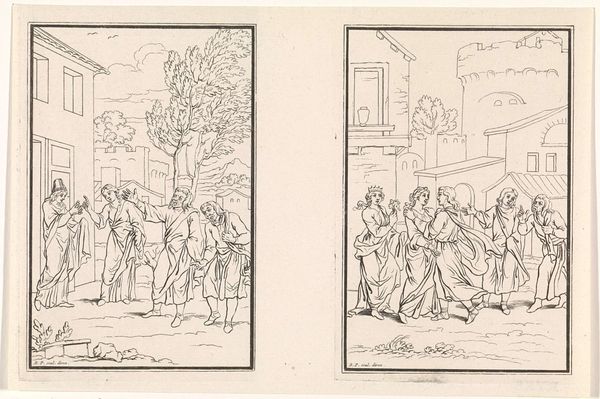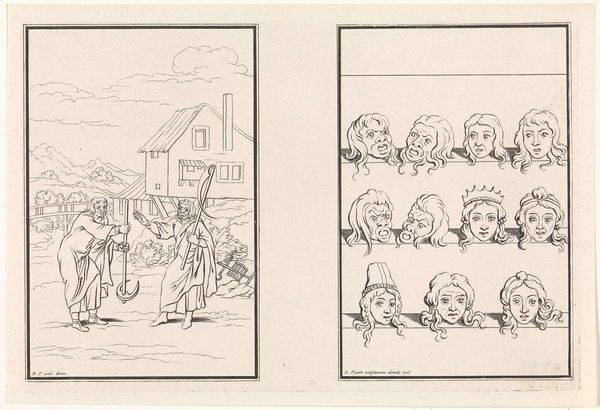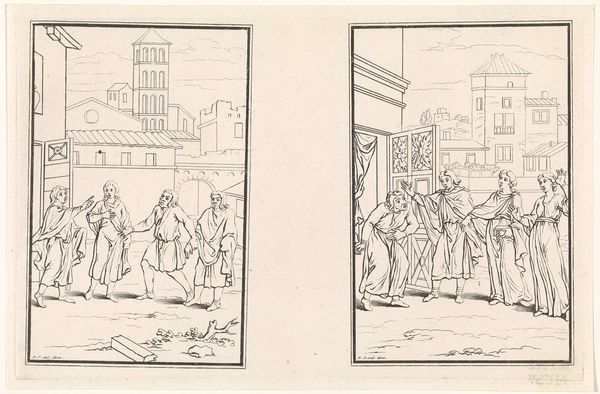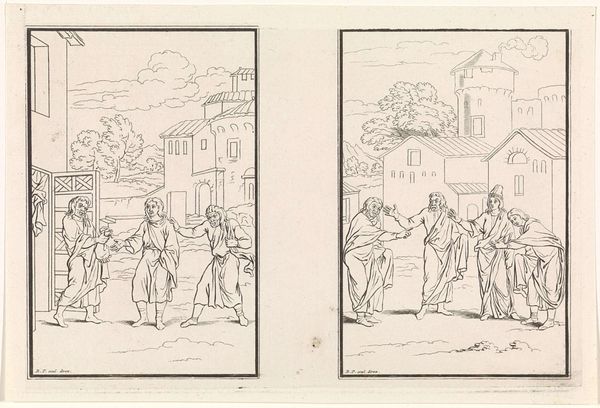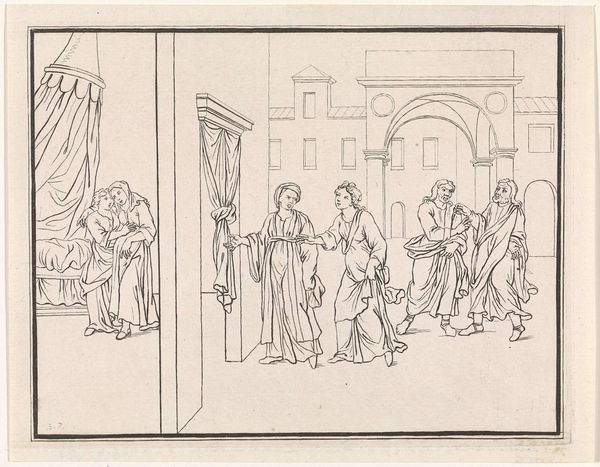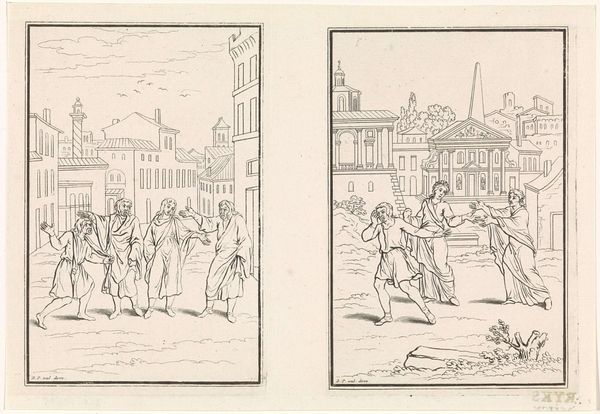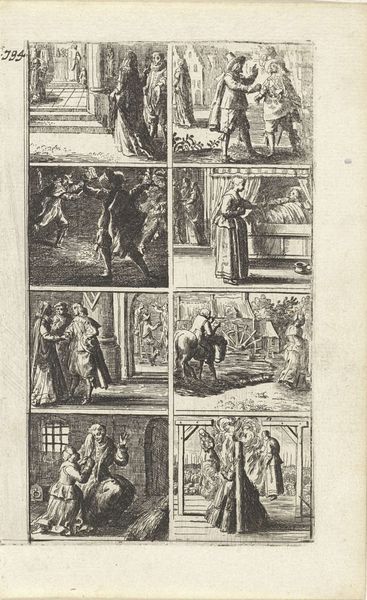
Maskers van personages en een scène uit de komedie Phormio van Terentius 1716
0:00
0:00
bernardpicart
Rijksmuseum
drawing, print, ink, pen, engraving
#
portrait
#
drawing
#
baroque
# print
#
figuration
#
ink
#
pen
#
history-painting
#
engraving
Dimensions: height 130 mm, width 193 mm
Copyright: Rijks Museum: Open Domain
Curator: This ink and pen drawing, also an engraving, is titled “Maskers van personages en een scène uit de komedie Phormio van Terentius,” created in 1716 by Bernard Picart. Editor: The composition is quite striking. I’m immediately drawn to the contrast between the rigid rows of masks on the left and the more dynamic scene on the right. It gives a somewhat disjointed but captivating feeling. Curator: Exactly. Picart uses these visual strategies to explore themes related to theater and performance. The masks allude to characters and theatrical expressions. I find it interesting to consider who has access to theatre versus those outside, as it’s an ongoing class issue that determines one's exposure. Editor: Yes, but looking at the individual forms, the curved lines and shaded areas create an illusion of depth despite the fairly simple linework. The masks themselves seem to be floating from their backgrounds. Do you think he’s also nodding towards character studies here? Curator: Absolutely. Remember, the period produced a fascination with taxonomy. Here the masks can be viewed not only as caricatures or dramatic types, but as reflections of different roles dictated by the societal norms. Look at the final heads in the lower register! It appears only elite white women’s visages can round out this array. Editor: That reading is fascinating. However, the artist is more interested in exploring and showcasing technique by creating varied textures with the simplest strokes. It’s interesting how ink is leveraged to produce a sense of dynamism through varying hatching marks and subtle variations of pressure. Curator: And who do you suggest had the opportunity to obtain such talent during this time period? Editor: It's quite simple—form reveals meaning, but context also illuminates understanding. Together, the expressive capabilities highlight the universal emotions depicted through drama. Curator: Yes, but such expressions still required freedom from certain prejudices. Viewing art as inherently detached from its time—I believe—creates historical obfuscations and a narrow framework through which to consider an image. Editor: Point taken. Together though, through Picart's image, perhaps we see both our inherent need to classify and contextualize art in a new and generative dialogue.
Comments
No comments
Be the first to comment and join the conversation on the ultimate creative platform.

